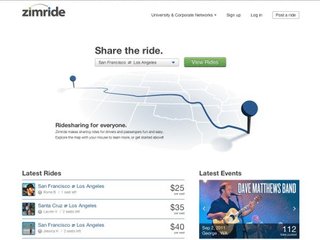Washington state selects Fusion Health as its official EHR vendor
The contract will make it easier for state agencies to evaluate and implement Fusion's technology
Read more...
As much as I love the idea of ride-sharing, I will never, ever, ever use one of those services. Why, you ask? Because I read newspapers. I’ve read enough stories about women being abducted by totally normal-looking creepers to have a healthy fear of unsafe situations. My God, hasn’t anyone read that viral notice that rapists are now putting recordings of crying babies on women’s doorsteps to get them to come outside?! Rapists are now using babies to get women to open their doors!
So thanks, but no thanks Lyft, Sidecar, Zimride, and everyone else (I know there's a whole bunch of you out there).
The kind of regulatory risk that comes with having any Joe Schmoe offer a ride to any other Joe Schmoe is a risk that Uber hasn’t been willing to take on. Until now. The company released a policy paper Friday announcing its new foray into the world of ride-sharing.
Specifically, Uber will be adding a ride-sharing option to all of the markets it currently serves where other services have received “tacit approval”—meaning regulators haven’t cracked down on them.
Ride-sharing is a murky legal area. Drivers typically don’t hold commercial licenses or have the right insurance for transporting passengers, but ride-sharing companies have enjoyed relative freedom to run their businesses due to the fact that they’re not technically taxi services.
By contrast, Uber has faced a never-ending wave of regulatory hurdles as the taxi industry has risen up against the service. In New York, for example, Uber’s attempt to expand to yellow taxis was charged by taxi regulators with violating a ban on arranging rides by phone.
“Over the last year we’ve stayed out of the ridesharing fray due to perceived regulatory risk and watched two competitors roll out in a few cities in which we already operate, without nearly the same level of constraints or costs, offering a far cheaper product,” wrote Uber CEO Travis Kalanick in the policy paper.
He added: “With Uber’s approach, our partners have to buy cars, purchase commercial insurance, and spend thousands of dollars in order to get commercially licensed after going through mounds of red tape. In the ridesharing model, a driver can walk into their offices and be up and running in 24 hours, no extra commercial insurance, no thousands of dollars in fees to get licensed, and without months of wading through bureaucratic red tape.”
Essentially, Uber will roll out its own ride-sharing service where ever regulators haven’t freaked out about other ride-sharing services. The policy paper states that if a competitor has been able to operate in a given city for at least 30 days without regulatory enforcement, it will offer its own services in the same area. However, in those areas where competitors have faced clear and consistent regulatory enforcement within 30 days, Uber will not roll out its platform.
To keep things on the up-and-up, Uber will require ride-sharing drivers to undergo extensive and strict background checks, which Kalanick says will be “stricter than what any existing local regulatory body already has in place for commercial transportation providers.” Additionally, there will be a minimum $2 million insurance policy applied to any ride-sharing trip booked through Uber.
Image source: NYTimes
The contract will make it easier for state agencies to evaluate and implement Fusion's technology
Read more...The new office marks OpenAI's first location in Asia
Read more...Fertility treatments are more relevant than ever; here are a few startups pioneering new solutions
Read more...





